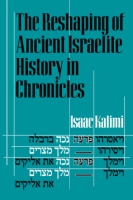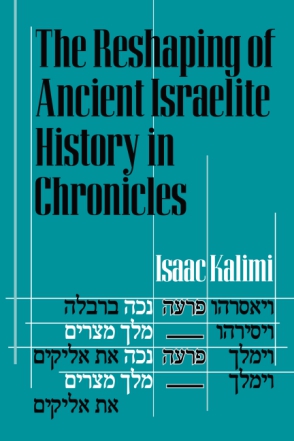The Reshaping of Ancient Israelite History in Chronicles
Isaac Kalimi
This book was awarded the 2006 R. B. Y. Scott award, which is awarded annually by the Canadian Society of Biblical Studies in recognition of an outstanding book in the areas of Hebrew Bible and/or the Ancient Near East written by a member of the CSBS.
- Description
- Table of Contents
Kalimi catalogues and categorizes the techniques by which the Israelite history in Samuel—Kings is reshaped in the biblical books of Chronicles. The chapters of this study consider the various historiographical and literary changes found in the parallel texts of Chronicles. Because about half of the material in Chronicles is available to us in other biblical sources, comparison of the literary and linguistic devices used by the Chronicler is very revealing. Kalimi considers the ways in which the Chronicler has edited the material available to him, addressing such topics as: literary-chronological proximity, historiographical revision, completions and additions, various kinds of parallelism and literary devices, and so on. A handy compendium of the ways in which the Chronicler treated his material by one of the premier scholars working in the field.
Preface
Introduction
Chapter 1. Literary-Chronological Proximity
Chapter 2. Historiographical Revision
Chapter 3. Completions and Additions
Chapter 4. Omissions
Chapter 5. Given Name - Equivalent Name Interchanges
Chapter 6. Treatment of Problematic Texts
Chapter 7. Harmonizations
Chapter 8. Character Creation
Chapter 9. ‘Measure for Measure’
Chapter 10. Allusion
Chapter 11. Chiasmus
Chapter 12. Chiasmus between Parallel Texts
Chapter 13. Repetitions
Chapter 14. Inclusio
Chapter 15. Antithesis
Chapter 16. Simile
Chapter 17. Key Words
Chapter 18. Numerical Patterns
Chapter 19. Generalization and Specification
Chapter 20. Inconsistency, Disharmony, and Historical Mistakes
Conclusion
Bibliography
Indexes
Mailing List
Subscribe to our mailing list and be notified about new titles, journals and catalogs.




